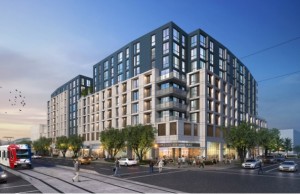2008 Homeless Count: Fewer chronically homeless, more families
Salt Lake City, Utah – The number of chronically homeless on Utah’s streets has dropped 15 percent, despite growth in overall homelessness, according to the latest headcount.
This year’s count pegs Utah’s annual chronically homeless population at 1,470, down from a 2005-2007 baseline average of 1,728. Meanwhile, the total number of homeless statewide increased 16 percent, driven by growing ranks of sheltered families.
An estimated 15,836 men, women and children will go homeless in 2008, about .06 percent of Utah’s population.
The count includes individuals living on the street, in emergency shelters, transitional housing and treatment facilities. It is federally mandated as part of a nationwide effort to take better stock of America’s homeless.
“Measuring the scope of homelessness is complicated. The population is fluid and hard to pin down,” said Utah Division of Housing and Community Development Director Gordon D. Walker. “But recognizing that you can’t manage what you do not measure, we’ve improved our data. We now have a reliable benchmark for charting progress toward Utah’s goal of ending chronic homelessness.”
State officials link the decline in chronically homeless to a new strategy of moving the long-term homeless off the streets into permanent, affordable apartments blanketed with supports like therapy, job counseling and addiction treatment.
“We’ve moved 200 men and women into apartments, and 85 percent are still housed. Many are finding jobs, kicking addictions and reconnecting with family,” said state Homeless Task Force Director Lloyd Pendleton. “We have a long way to go, but these numbers tell us we’re on the right track.”
The 2008 count also shows:
– Persons in families are the fastest growing segment of Utah’s homeless population, up 28 percent in 2008.
– The number of unsheltered homeless on the street declined 45 percent
Domestic violence, job losses, divorce and illness all factor into rising family homelessness. A shortage of affordable housing may also play a role, as do better tools for measuring the population, said Pendleton.
“Homelessness is a growing problem,” said Pendleton. “But the good news is we’re getting better at solving it. By housing the chronically homeless, we’re improving the efficiency of our shelters and freeing up more space for families.”
The chronically homeless are defined as single adults with a disabling condition who have been homeless for at least one year, or four times in three years. This group comprises 9 percent of Utah’s homeless population, but consumes more than half the state’s emergency shelter beds.
The 2008 numbers are based on a point-in-time count, an annual event during the last week of January in which volunteers fan out and canvass shelters, detox centers and city streets for homeless Utahns. The tallies are entered into a database managed by the State Homeless Coordinating Committee.
To avoid statistical errors and aberrations, a three-year baseline is used for making year-to-year comparisons. Homelessness, by the U.S. Department of Housing & Urban Development’s definition, is being “without a permanent place to live that is fit for human habitation.”
Utah’s Homeless Task Force is managed by the Division of Housing and Community Development under the Utah Department of Community and Culture.




